


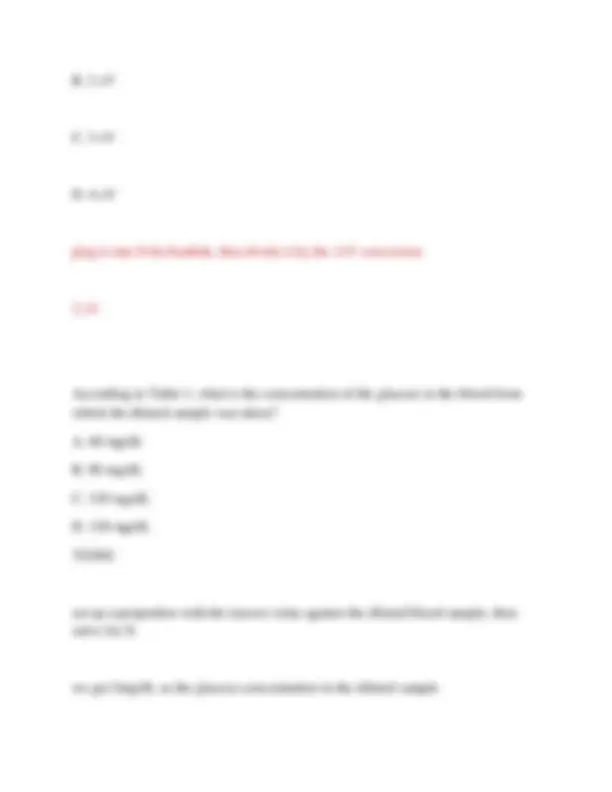

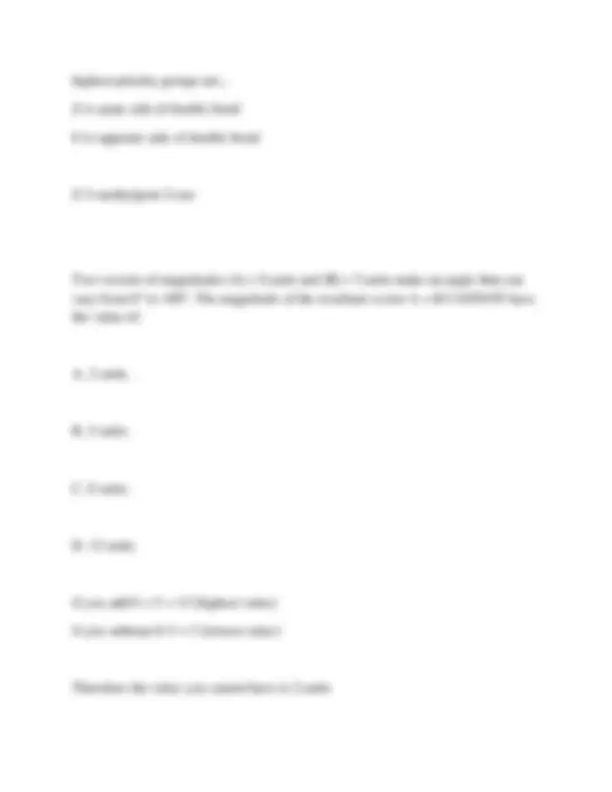
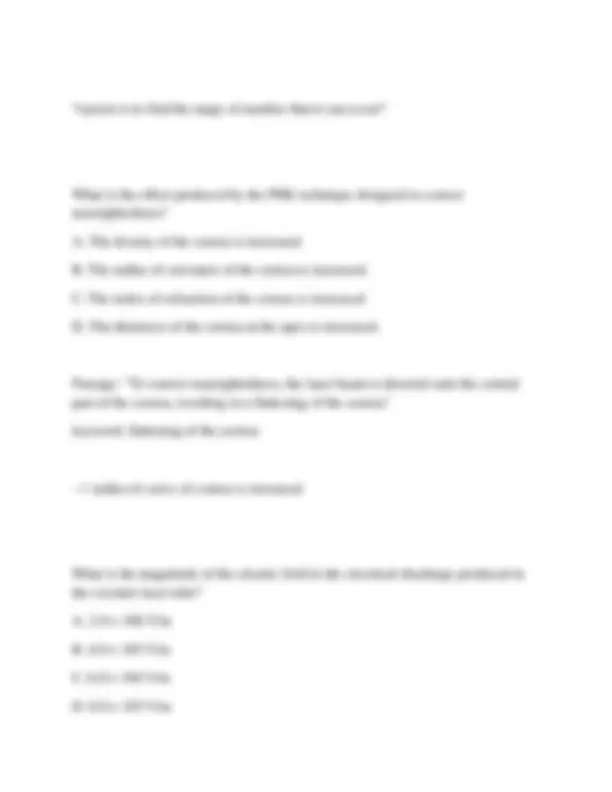

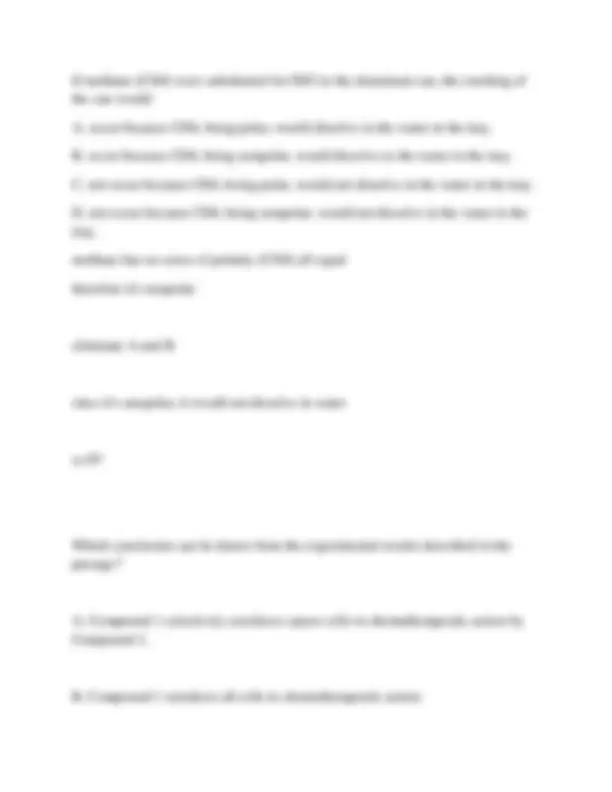
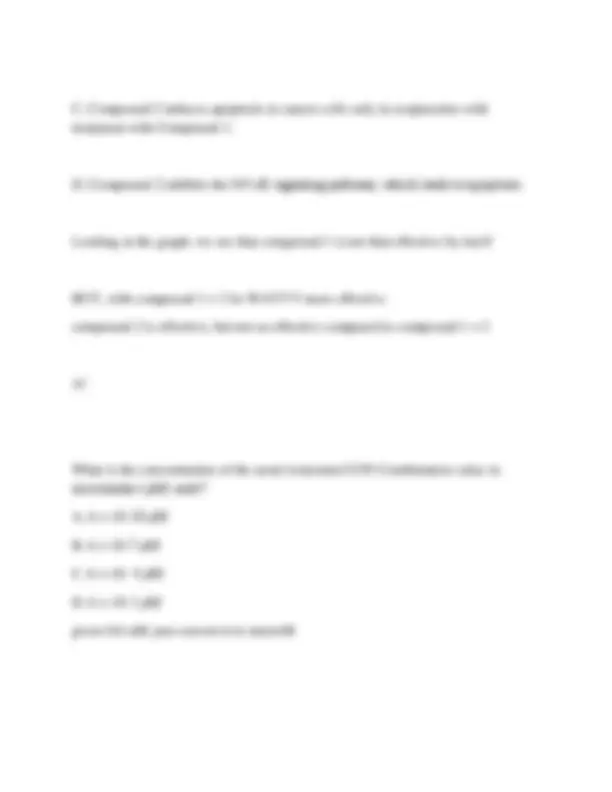
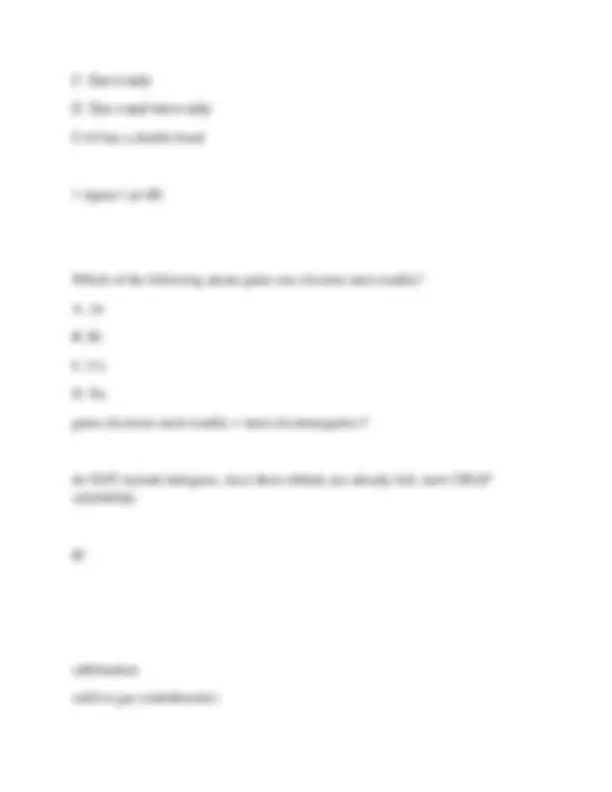








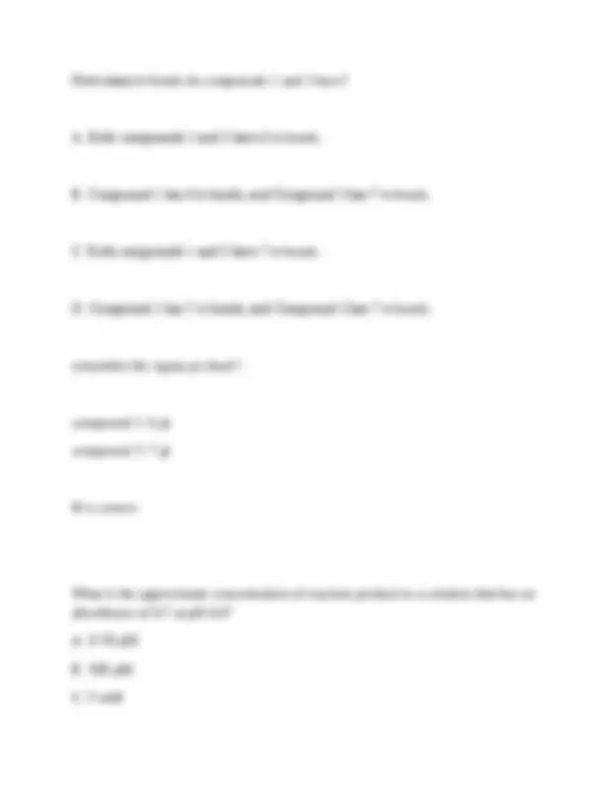

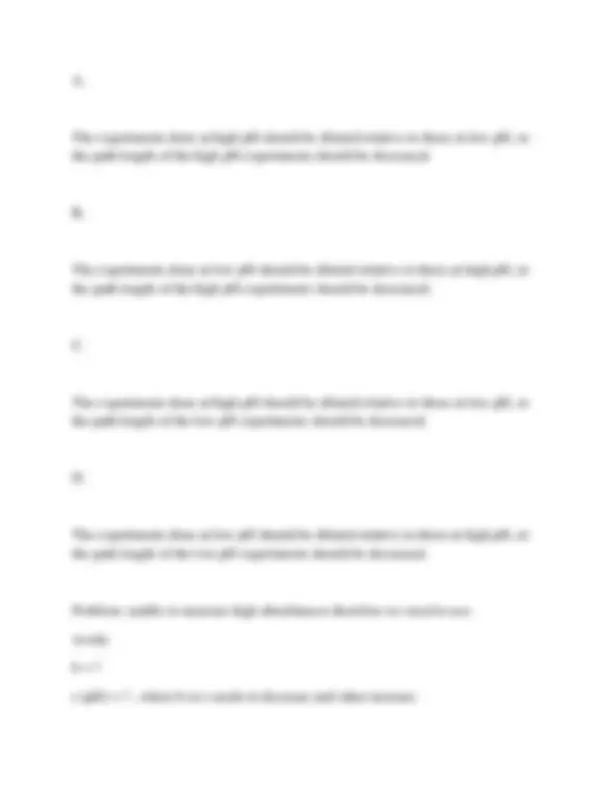
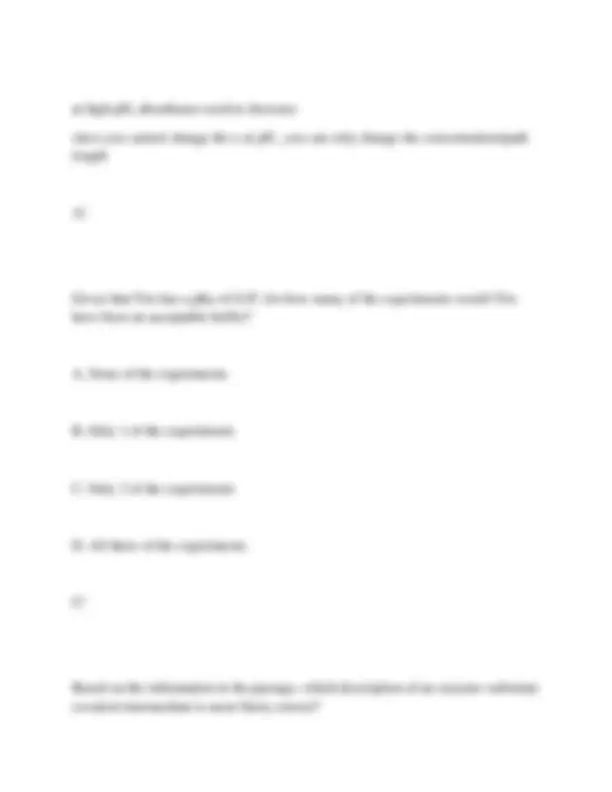

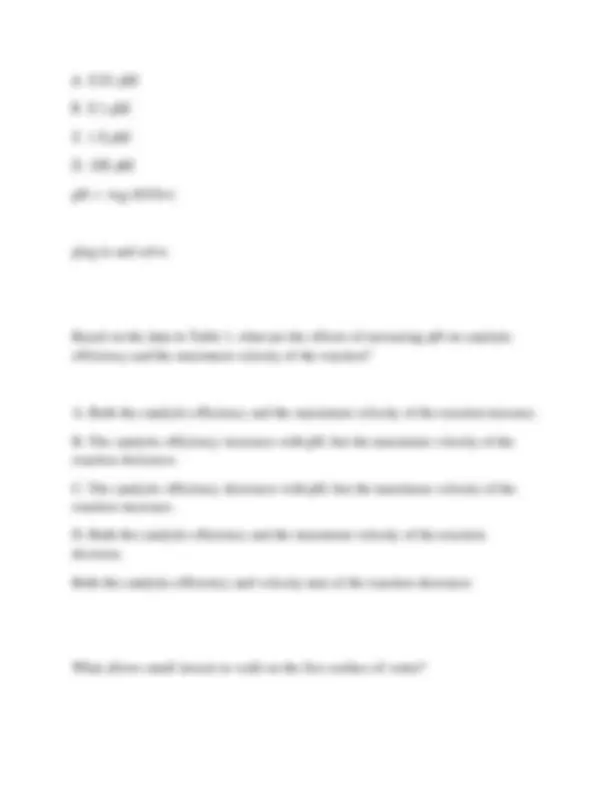
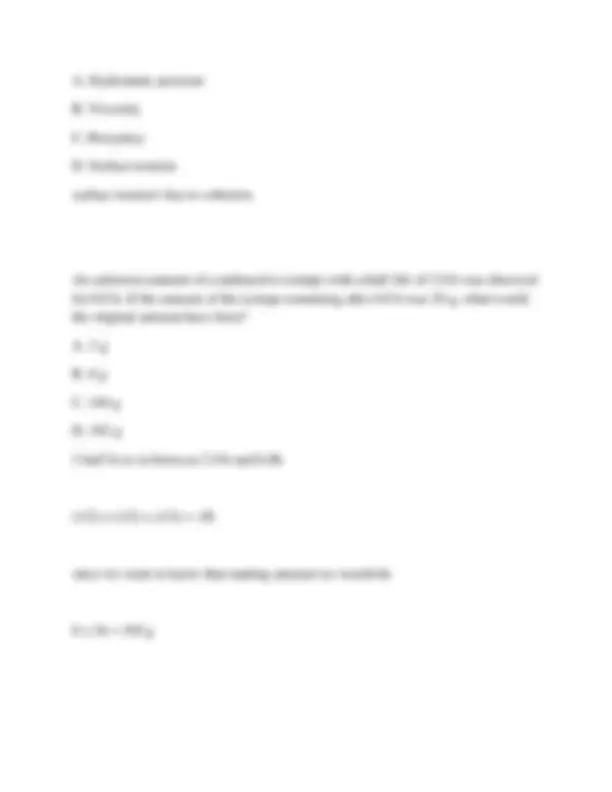
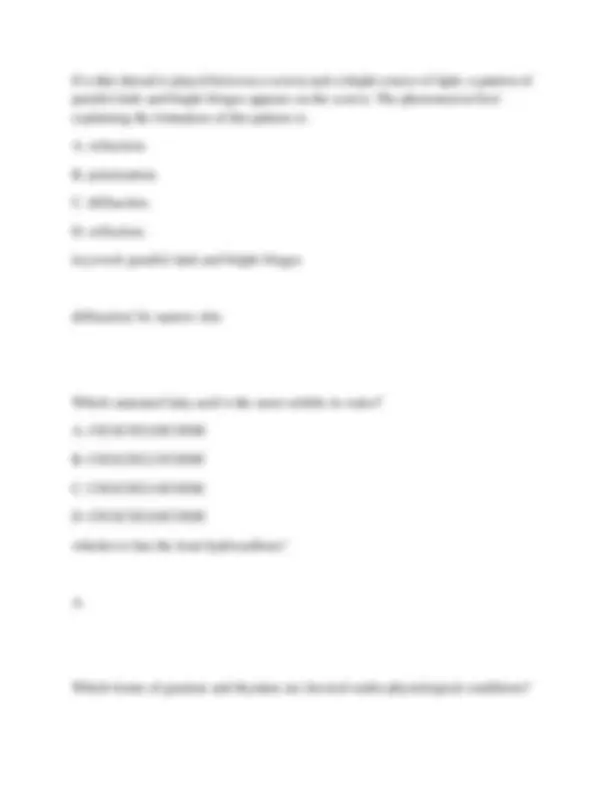
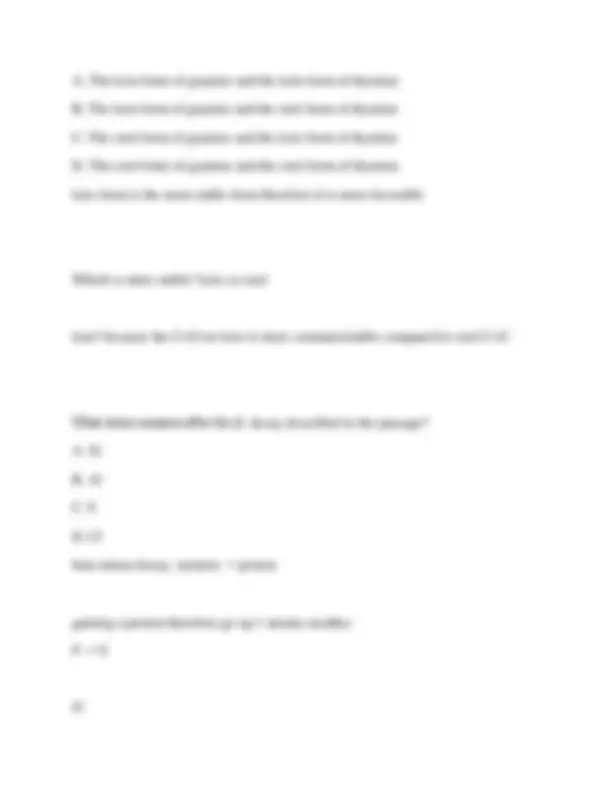
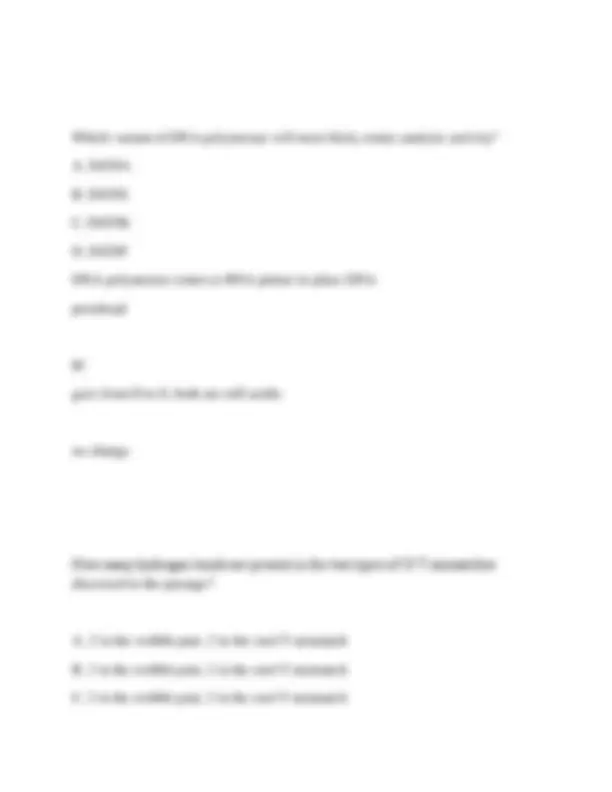
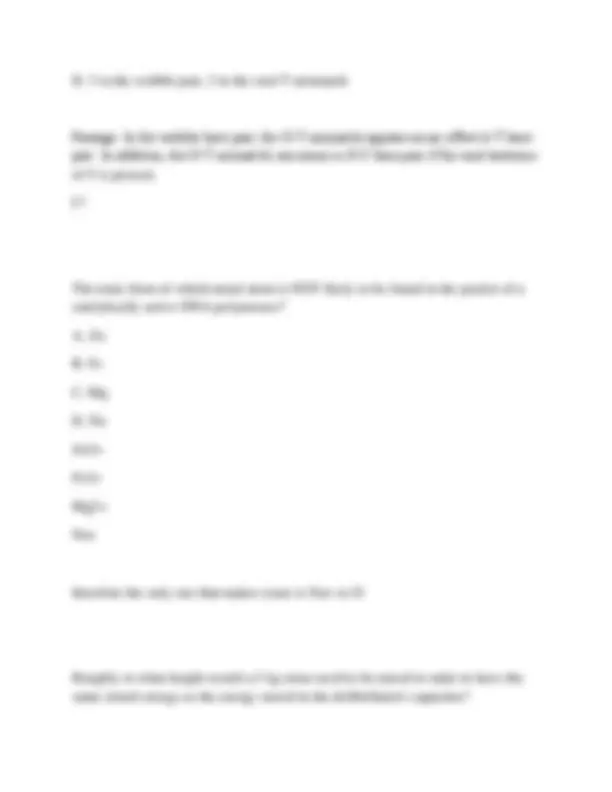
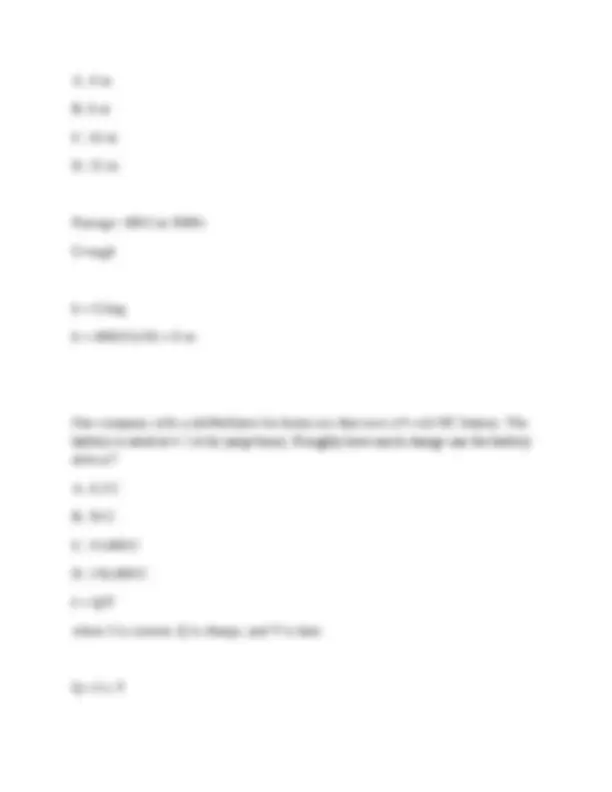
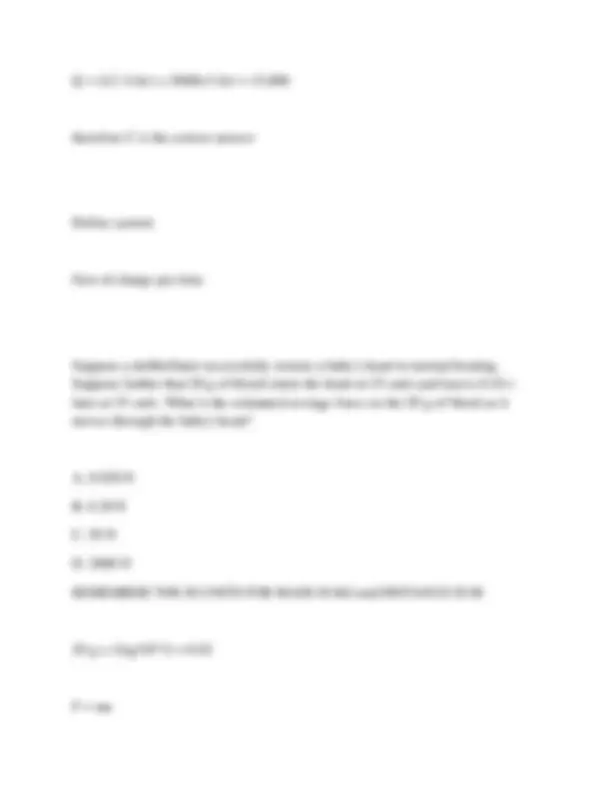
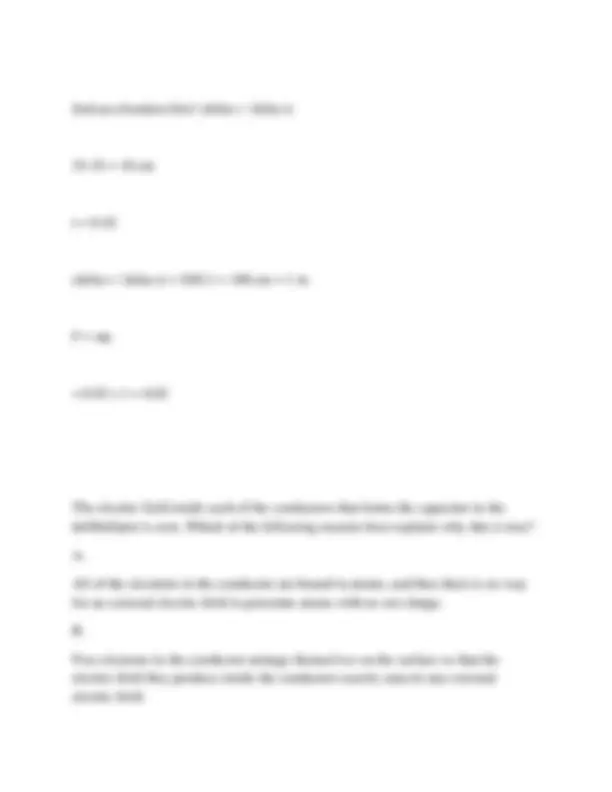
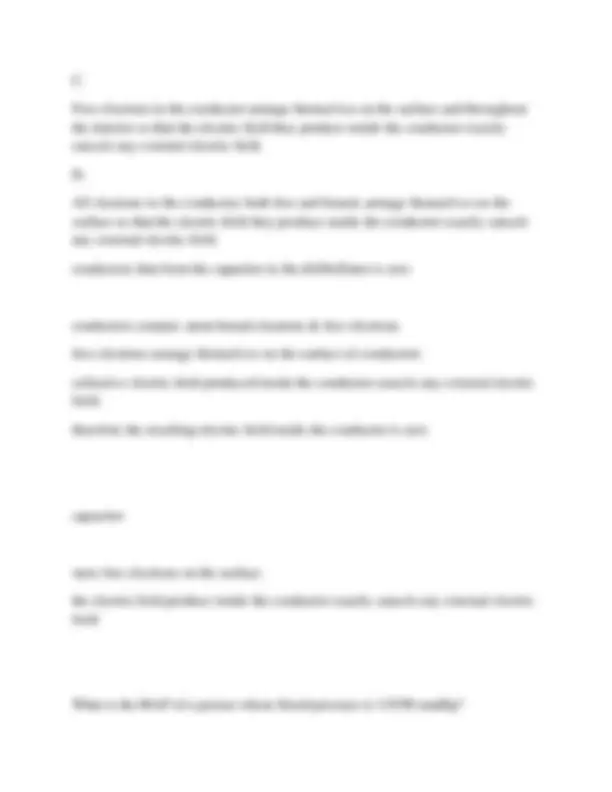
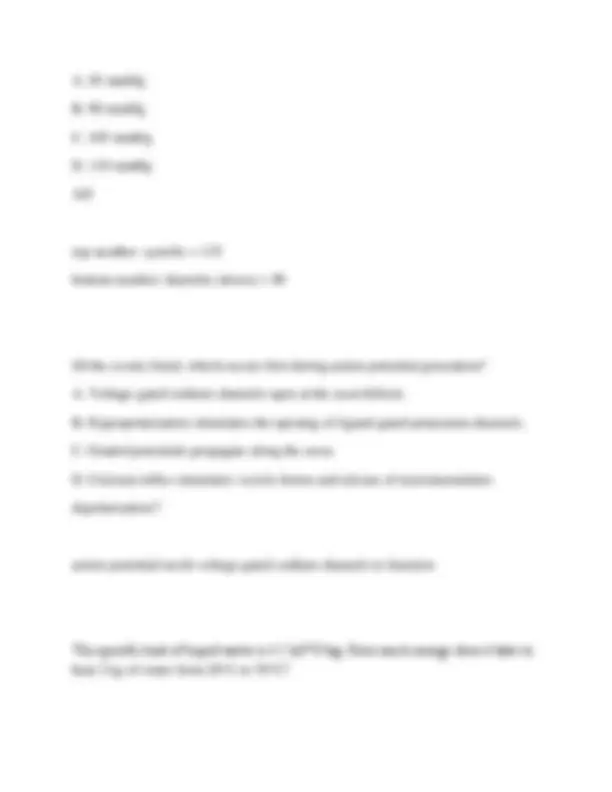



Study with the several resources on Docsity

Earn points by helping other students or get them with a premium plan


Prepare for your exams
Study with the several resources on Docsity

Earn points to download
Earn points by helping other students or get them with a premium plan
Community
Ask the community for help and clear up your study doubts
Discover the best universities in your country according to Docsity users
Free resources
Download our free guides on studying techniques, anxiety management strategies, and thesis advice from Docsity tutors
AAMC FL 4 CP EXAM 2025 QUESTIONS AND ANSWERS GRADED A+
Typology: Exams
1 / 43

This page cannot be seen from the preview
Don't miss anything!




































Limestone does NOT decompose when heated to 900 K because, at 900 K, ΔH is:
A.positive and less than TΔS.
B.positive and greater than TΔS.
C.negative and less than TΔS.
D.negative and greater than TΔS.
does not decompose = not spontaneous!!
therefore delta S needs to be - and delta H is +
positive S means that it's going to be spontaneous
therefore we want S to be negative
When limestone is heated during Step 1, an equilibrium is established. Which of the following expressions is the equilibrium constant for the decomposition of limestone?
A.[CaO]
B.[CaCO3]
C.[CO2]
D.[CaO] × [CaCO3]
when writing Keq, NEVER include solids or liquids in the equation
only include aq or gas
Keq = [product]/[reactant]
During Reaction 2, did the oxidation state of N change?
A.Yes; it changed from -3 to -4.
B.Yes; it changed from 0 to +1.
C.No; it remained at -3.
Why was it important that the cuvettes containing the glucose oxidase and the blood sample were identical in terms of optical properties?
A. To enable the comparison of the absorption spectra
B. To reduce the absorption in the glass walls
C. To decrease the uncertainty in the wavelength
D. To increase the absorption in the solutions
Passage: "a blood sample with 1/30 dilution ratio was mixed in a transparent cuvette with an oxygen-acceptor solution containing glucose oxidase."
curvettes in spectroscopy
they are measuring absorbance!! therefore we need to have a "reference" using the curvette
A! to enable the comparison of the absorption spectra
What is the approximate energy of a photon in the absorbed radiation that yielded the data in Table 1?
(Note: Use 1 eV = 1.6 × 10–19 J and hc = 19.8 × 10–26 J•m.)
A. 1 eV
B. 2 eV
C. 3 eV
D. 4 eV
plug it into E=hc/lambda, then divide it by the 1eV conversion
2 eV
According to Table 1, what is the concentration of the glucose in the blood from which the diluted sample was taken?
A. 60 mg/dL
B. 90 mg/dL
C. 120 mg/dL
D. 150 mg/dL
YESSS
set up a proportion with the known value against the diluted blood sample, then solve for X
we get 5mg/dL as the glucose concentration in the diluted sample
B. Both 1-chlorobutane and 1-butanol are nonpolar.
C. The boiling point of 1-chlorobutane is substantially higher than that of 1- butanol.
D. The boiling point of 1-chlorobutane is substantially lower than that of 1- butanol.
fractional distillation: separates according to boiling point
anything that has more hydrogen bonds will have a higher boiling point
1-chlorobutane vs 1-butanol
1-butanol will have a higher BP due to the OH group.
D! The boiling point of 1-chlorobutane is substantially lower than 1 butanol
Which of the following oxidative transformations is unlikely to occur?
A. A primary alcohol to an aldehyde
B. A tertiary alcohol to a ketone
C. An aldehyde to a carboxylic acid
D. A secondary alcohol to a ketone
A: yes (PCC)
B:
C: yes (H2CrO4)
D: yes (Na2Cr2O7, H2SO4, PCC)
or if you think kinda logically, usually the most sterically hindered one would be the most difficult to occur.
According to the IUPAC, what is the systematic name for the hydrocarbon shown?
A. Z-3-methylpent-2-ene
B. E-3-methylpent-2-ene
C. Z-3-ethylbut-2-ene
D. E-3-ethylbut-2-ene
Z and E configuration
easiest is to find the range of number that it can occur
What is the effect produced by the PRK technique designed to correct nearsightedness?
A. The density of the cornea is increased.
B. The radius of curvature of the cornea is increased.
C. The index of refraction of the cornea is increased.
D. The thickness of the cornea at the apex is increased.
Passage: "To correct nearsightedness, the laser beam is directed onto the central part of the cornea, resulting in a flattening of the cornea"
keyword: flattening of the cornea
--> radius of curve of cornea is increased
What is the magnitude of the electric field in the electrical discharge produced in the excimer laser tube?
A. 2.0 × 106 V/m
B. 4.0 × 105 V/m
C. 6.0 × 104 V/m
D. 8.0 × 103 V/m
electric field
E = F/q
E = V/d
** if you're confused on what equation, look at the units and it'll help you. so V/m so it'll be volts/distance **
What is the frequency of the pulses that deliver laser radiation to the cornea?
A. 0.4 Hz
B. 4.0 Hz
C. 25 Hz
D. 250 Hz
Passage: "pulsed laser radiation at time intervals of 250 ms"
time intervals = periods! pulse periods
use: T = 1/f
H2O is also nucleophile
C! both dipole dipole & london dispersion forces
NH3 acts as a weak base in water with Kb = 1.76 × 10–5 at 25°C. The corresponding equilibrium is shown below.
NH3(aq) + H2O(l) ⇌ NH4+(aq) + OH–(aq)
At 25°C, the equilibrium concentration of the NH4+ ion in a 10 M aqueous solution of NH3 would be closest to which of the following?
If methane (CH4) were substituted for NH3 in the aluminum can, the crushing of the can would:
A. occur because CH4, being polar, would dissolve in the water in the tray.
B. occur because CH4, being nonpolar, would dissolve in the water in the tray.
C. not occur because CH4, being polar, would not dissolve in the water in the tray.
D. not occur because CH4, being nonpolar, would not dissolve in the water in the tray.
methane has no sense of polarity (CH4) all equal
therefore it's nonpolar
eliminate A and B
since it's nonpolar, it would not dissolve in water
so D!
Which conclusion can be drawn from the experimental results described in the passage?
A. Compound 1 selectively sensitizes cancer cells to chemotherapeutic action by Compound 2.
B. Compound 1 sensitizes all cells to chemotherapeutic action.
Compared to treatment with Compound 2 alone, which cell line shows the greatest enhancement of chemotherapeutic activity as a result of sensitization by Compound 1?
A. Acute leukemia
B. Fibrosarcoma
C. Cervical carcinoma
D. Noncancerous fibroblast
Passage: "CC95 indicates the concentration to induce apoptosis in 95% of the cells after 48 hours"
Keyword: CC95 = conc need to induce apoptosis
greatest enhancement of chemo activity
therefore we are looking for the lowest number!
acute leukemia!!
keep in mind of the units too*
acute leukemia is the only one in nanos all the others are in micro.
Assume that cellular uptake rates and drug delivery rates of compounds 1 and 2 are identical. If the proposed mechanism of sensitization by Compound 1 is correct, what cancer cell treatment protocol is most likely to produce the most apoptosis 20 h after treatment?
A. Administration of both Compound 1 and Compound 2 simultaneously
B. Administration of Compound 1 followed by Compound 2 after 0.5 h
C. Administration of Compound 2 followed by Compound 1 after 0.5 h
D. Administration of Compound 2 followed by Compound 1 after 1 d
ez question
A carbonyl group contains what type of bonding interaction(s) between the C and O atoms?
A. One σ only
B. One σ and one π only
deposition
gas to solid (exothermic)
increase wavelength
decrease frequency
decrease energy
Which of the following functional groups is present in pyrrolizidine (Figure 1)?
A. An amide
B. An amine
C. An imine
D. A carbamate
carbamate
nitrogen on the other side of O of the ester group
ester
amide
NH2 + carbonyl
amine
imine
A double bond between a carbon and a nitrogen
enamine